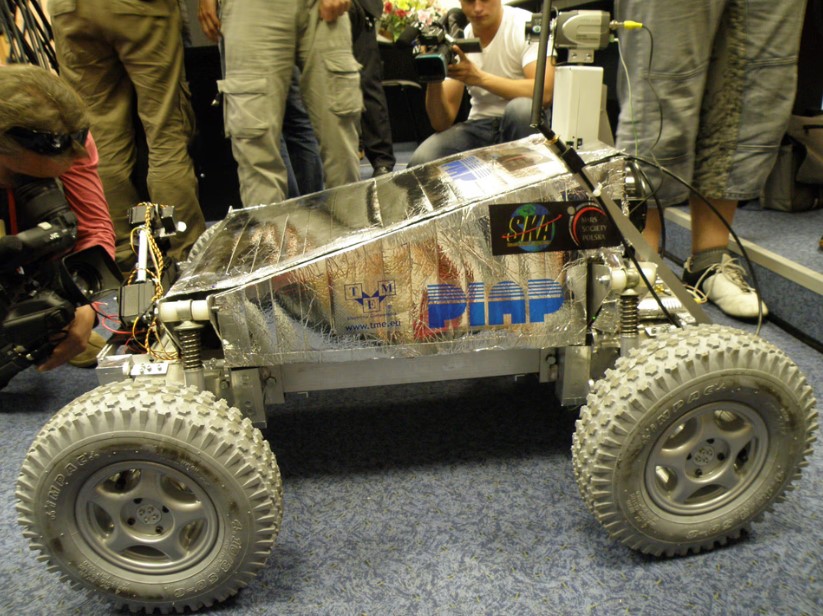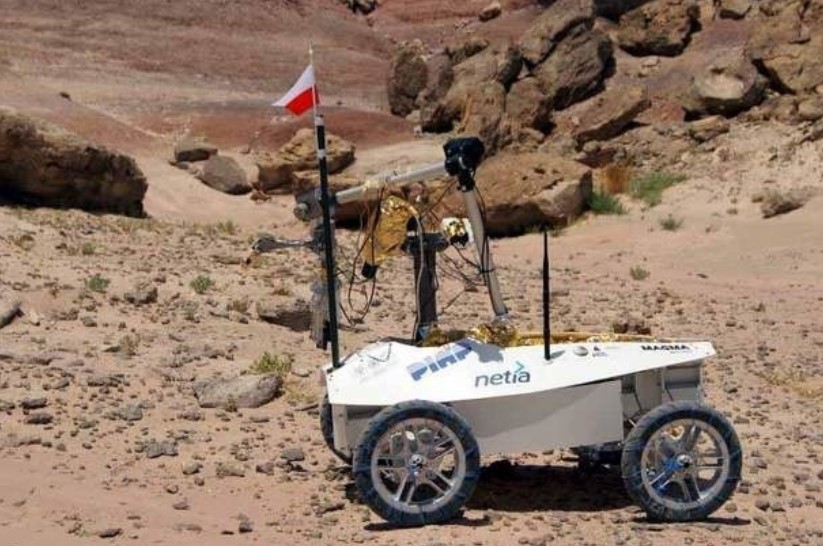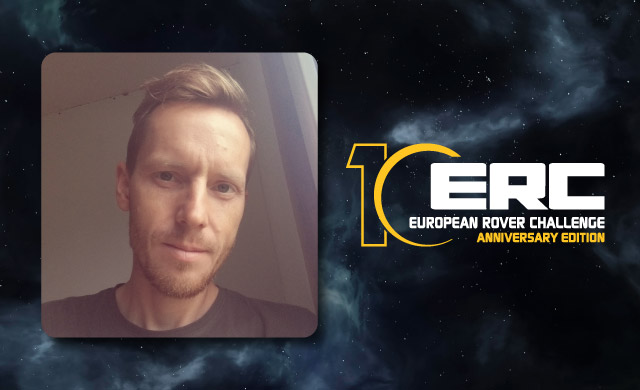The beginnings
With a smile on my lips I can say that it started with me! I am probably the most experienced rover challenge participant in the world. For as long as I can remember I have been interested in space and Mars in particular. Several years ago, robotic missions to Mars (Spirit, Opportunity, Sojourner) were extremely popular. They (and Mars itself) were what brought together my passion for space, science-fiction, automation and robotics.
Back in 2007, I signed up for the Mars Society Poland, and soon after that I learned about the existence of the University Rover Challenge in the US. Something out of the box – I thought – it’s worth the time! At first when I said I wanted to build a Mars rover no one knew what it was. The level of recognition of the topic of rovers was nonexistent, and the only association it evoked in my conversations was a popular candy bar called “MARS.”
The first rover was created while I was still with the Students of the Astronautical Association at Warsaw University of Technology and was called SKARABEUSZ, in cooperation with Mars Society Poland. It was my first experience with the URC, 2009. We took 6th place despite logistical problems, through which the rover only arrived on the last day of the competition! When the topic of rovers took off a bit, in 2010 we formed a team at Bialystok University of Technology and created the MAGMA rover in cooperation with UMK from Toruń and took third place. A year later, already independently at the Bialystok University of Technology, we designed the MAGMA2 rover, which made us the first Polish team ever to win the URC competition. The victory of the Polish team was the news on everyone’s lips! We already knew each other at the time with Lukasz Wilczynski, who was founding the European Space Foundation around that time. We came to the conclusion that it was probably a good time to create a similar venture on this part of the globe. That’s how the European Rover Challenge began.
“SKARABEUSZ” rover

“MAGMA” rover

The “MAGMA2” rover

The first ERC competition
The first ERC in 2014 was the beginning of a great adventure. Lukasz asked me to prepare the rules of the competition, while he took care of the organization with the support of Mars Society Poland. We were looking for our own formula that would make us stand out in the region. The URC competition is held in a special research habitat in the middle of the desert in Utah. We decided that our differentiator would be the audience – openness to visitors, sharing knowledge and passion for rovers. This was the start of “rover frenzy” in Poland! Lukasz assumed then that the ERC would be a pop-science, picnic event that would be on everyone’s lips – and that’s exactly what happened. Competitors and visitors coming to the ERC always appreciate the openness of the event. In my opinion, the connection to the STEM exhibit and the openness to the public is the greatest value we have. It seems to me that no other space competition in the world has reached such a level of inviting the public, young people and children to participate.
I think the ERC conference attendees must also be in for a shock. Being used to the climate of typical industry conferences, they don’t expect to suddenly find themselves in the middle of a crowded event combining business with students and kids building their first LEGO rovers. It must be a fantastic experience to see attendees already having their first contact with the space industry at such a young age.
I remember when the ERC was held in Rzeszow in 2016, on a roofed trade fair hall. We spread tarps on the floor to protect the new hall surface from damage. When more trucks started showing up dumping tons of red dusty soil, we knew it was going to be a long night. The work of creating a surface for the competition always continued into the morning, when everyone had already reached a level of fatigue that puts you in a silly mood. I remember one of us spinning circles in a car in the hall around Marsyard pretending to be in a spaceship orbiting Mars, leaning out the door and conducting EVA (i.e. extra vehicular activity, space walk). There was always a lot going on in a good atmosphere, even when it required 12 hours of physical labor with a shovel.
The challenge
Participation in the ERC is not a one-time event. Just as I have participated three times as a competitor, I have observed the same with other teams. This is the first time you come to see what the competition is all about – the teams are verifying ideas, watching carefully, doing reconnaissance. You can see that the players are uncertain and are learning. By the second time, the teams already know how to approach the subject, more than once abandoning previous rover ideas. The third participation is usually the most informed and prepared, they have more confidence in the equipment and efficiently fight for points in the competition.
What matters in the competition is not the rover and its technical aspects, but the ability to use it to achieve the goals of the competition. I have the impression that this is rarely understood by teams, and we place an extremely strong emphasis on it. Some teams come to the competition with an advanced design that they have put a lot of time into, but they can’t control it well enough. It’s apparent that they focus on what the rover is made of, instead of getting to know it well from the ground up, gaining confidence in the equipment and experience in controlling it. It is the use of the rover that is scored, not the rover itself! Teams that participate in competitions many times are much more experienced in steering, know their equipment, and can react to faults and sudden changes.
I remember when I participated in the URC 2010 it was one of the teams in front of us that had an on-board computer malfunction and would not start, it kept rebooting. They spent an entire 30-minute preparation window to get it to turn on. This opened our eyes – they did something fundamentally wrong, it shouldn’t look like that. With MAGMA2, I said we wouldn’t have any computer on board. The rover was remotely controlled with RC modeling apparatus, and our control panel was a simple “analog” box. When we arrived to start the competition, we hit the switch and were ready. This was something incredible for the judges, and we were proud of it.
At the ERC, we’re keen for competitors to understand that equipment is just a tool, a means to achieve the goal. If they focus on construction and equipment, and lose sight of the goal, they gain nothing. I think this can be seen. Participation in this competition, the experience of spending several months building equipment topped by a low score is perhaps the most valuable lesson, forcing reflection. Here, too, a lot depends on the interdisciplinarity and competence of the team members. At work, too, they will have to deal with logistics, management, teamwork – all of which affect the end result.
The ERC is like vanilla ice cream
In my eyes, the biggest success of the ERC is the change in thinking about Poland’s role in space. I think that the popularity of the rovers and the sympathy with which we were met made people feel that space is not reserved only for Americans. We got rid of the inferiority complex.
The ERC is like vanilla ice cream, no one will say a bad word! One can only think of ERC in a positive way. It is a source of pride, definitely deserved. For me personally, the greatest satisfaction was when, while shopping in an automotive store in Bialystok, I said that “I need this part for the Mars rover competition,” and the salesman knew very well what I was talking about. A random person in a local store knows what a Mars rover is? No other country in the world has what we have!

